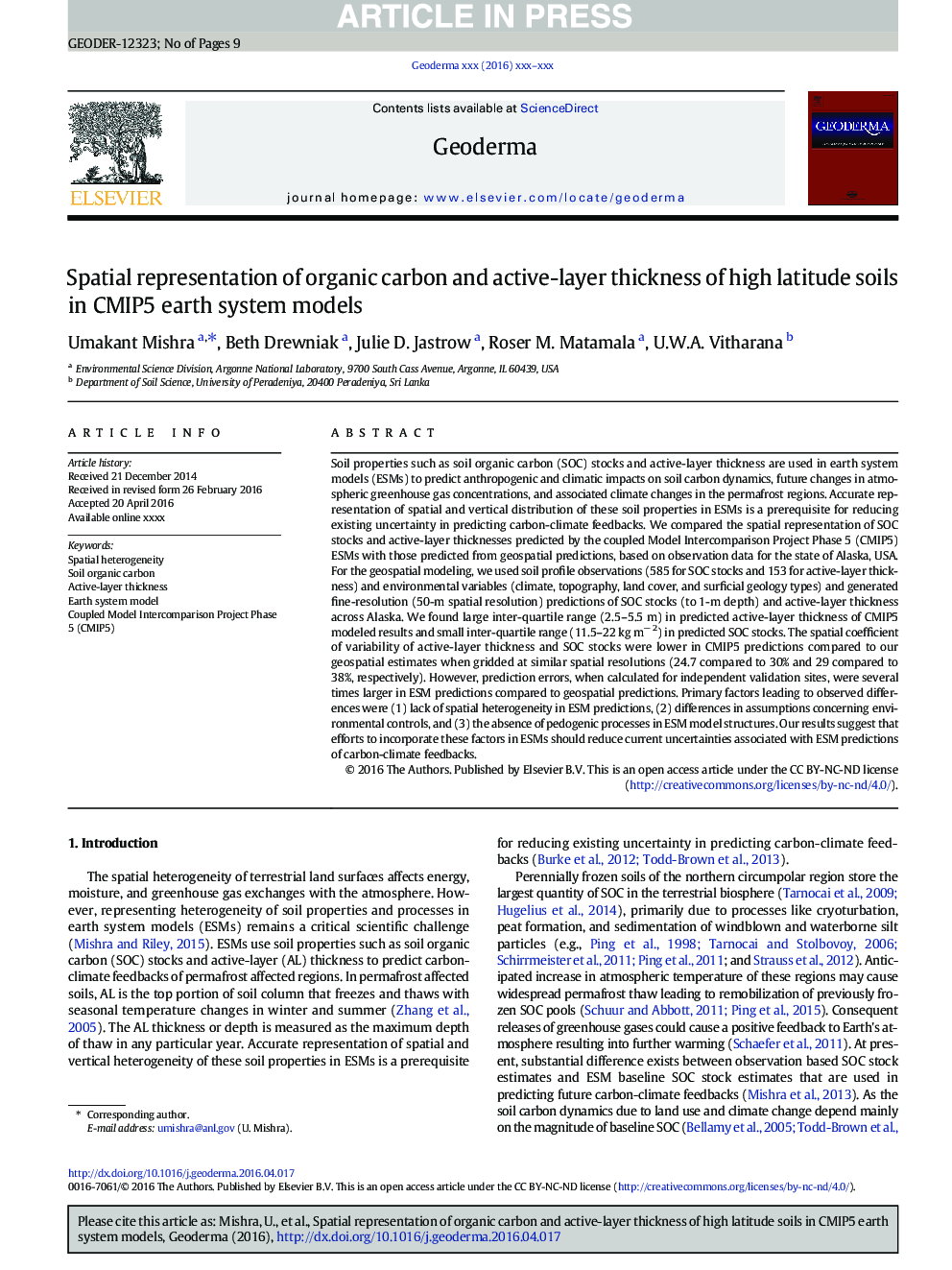| کد مقاله | کد نشریه | سال انتشار | مقاله انگلیسی | نسخه تمام متن |
|---|---|---|---|---|
| 5770347 | 1629417 | 2017 | 9 صفحه PDF | دانلود رایگان |
عنوان انگلیسی مقاله ISI
Spatial representation of organic carbon and active-layer thickness of high latitude soils in CMIP5 earth system models
دانلود مقاله + سفارش ترجمه
دانلود مقاله ISI انگلیسی
رایگان برای ایرانیان
کلمات کلیدی
موضوعات مرتبط
مهندسی و علوم پایه
علوم زمین و سیارات
فرآیندهای سطح زمین
پیش نمایش صفحه اول مقاله

چکیده انگلیسی
Soil properties such as soil organic carbon (SOC) stocks and active-layer thickness are used in earth system models (ESMs) to predict anthropogenic and climatic impacts on soil carbon dynamics, future changes in atmospheric greenhouse gas concentrations, and associated climate changes in the permafrost regions. Accurate representation of spatial and vertical distribution of these soil properties in ESMs is a prerequisite for reducing existing uncertainty in predicting carbon-climate feedbacks. We compared the spatial representation of SOC stocks and active-layer thicknesses predicted by the coupled Model Intercomparison Project Phase 5 (CMIP5) ESMs with those predicted from geospatial predictions, based on observation data for the state of Alaska, USA. For the geospatial modeling, we used soil profile observations (585 for SOC stocks and 153 for active-layer thickness) and environmental variables (climate, topography, land cover, and surficial geology types) and generated fine-resolution (50-m spatial resolution) predictions of SOC stocks (to 1-m depth) and active-layer thickness across Alaska. We found large inter-quartile range (2.5-5.5 m) in predicted active-layer thickness of CMIP5 modeled results and small inter-quartile range (11.5-22 kg mâ 2) in predicted SOC stocks. The spatial coefficient of variability of active-layer thickness and SOC stocks were lower in CMIP5 predictions compared to our geospatial estimates when gridded at similar spatial resolutions (24.7 compared to 30% and 29 compared to 38%, respectively). However, prediction errors, when calculated for independent validation sites, were several times larger in ESM predictions compared to geospatial predictions. Primary factors leading to observed differences were (1) lack of spatial heterogeneity in ESM predictions, (2) differences in assumptions concerning environmental controls, and (3) the absence of pedogenic processes in ESM model structures. Our results suggest that efforts to incorporate these factors in ESMs should reduce current uncertainties associated with ESM predictions of carbon-climate feedbacks.
ناشر
Database: Elsevier - ScienceDirect (ساینس دایرکت)
Journal: Geoderma - Volume 300, 15 August 2017, Pages 55-63
Journal: Geoderma - Volume 300, 15 August 2017, Pages 55-63
نویسندگان
Umakant Mishra, Beth Drewniak, Julie D. Jastrow, Roser M. Matamala, U.W.A. Vitharana,